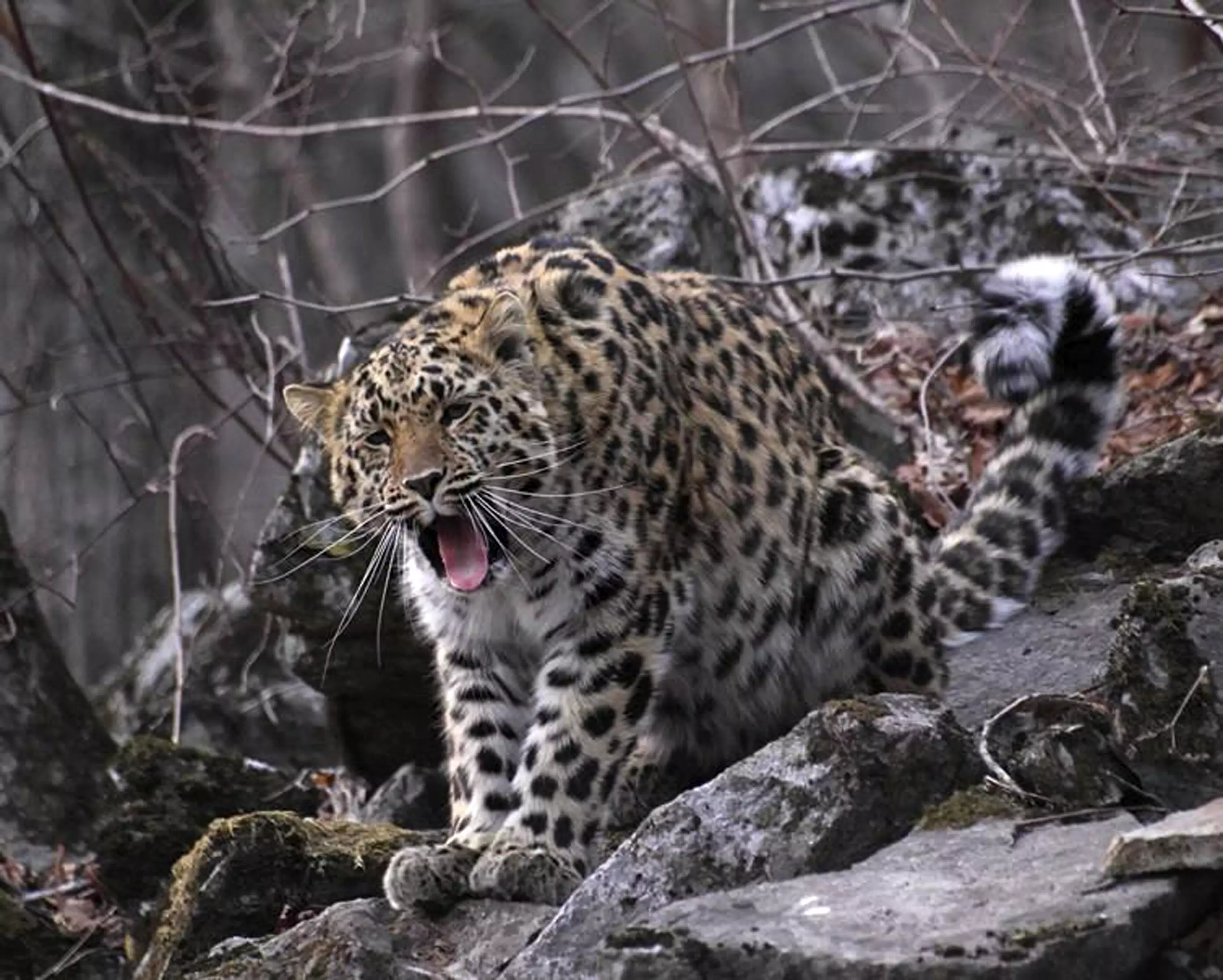
One of the world's rarest big cats is hiding in this picture, with its camouflage making it almost impossible to spot.
There are reportedly less than 120 of the Amur leopards (aka Siberian leopards) left living in the wild, but its amazing camouflage gives conservationists hopes for the survival of the species.
Their natural habitat is in Siberia (the name gives it away, doesn't it?). These photos were snapped at the Land of the Leopard Nature Reserve in the Far East of Russia. The area is a natural park which was set up by the Kremlin in order to try to save the species.

Senior state inspector of the reserve, Andrey Troyanov, took the impressive photos
Advert
There are only 86 adults and 21 young leopards known to be living in their natural habitat, with the future of the species as a wild - rather than zoo - animal depending on them.
Although the leopards are still highly endangered, two decades ago there were only 30 known adults after years of poaching during the Soviet era.
Some of them still exist in zoos around the world, but about 100 years ago, the big cat was seen roaming the Korean peninsula, in several provinces in China, as well as regions of eastern Russia.
Today though, they are pretty much only found in Russia's Primorsky region.

The national park also protects endangered Amur tigers, the world's largest big cat, and there are populations of brown and back bears.
Advert
Despite Amur leopards' scarce numbers, it's not all bad news. In 2016, the births of 16 new cubs were registered at Land of the Leopard Nature Reserve over an 18 month period.
Cameras were set up around the park, which spreads of 1,000 square miles in the eastern Russian park. The cameras counted the new arrivals - which included three cubs which were born to a leopardess named Queen Borte.

American actor, director and producer Steven Seagal became the keeper of Leo 16F in September 2015 when he visited to Vladivostok. Seagal named the leopardess after Genghis Khan's first wife, who was said to be famously fertile and gave birth to nine children.
Advert
The births also meant higher penalties were imposed against poachers, who hunted the animals for their skins, as well as Siberian tigers, both of which are endangered species.
A scheme has been put in place to stop farmers from shooting the animals when protecting their livestock.
Featured Image Credit: east2westTopics: Animals